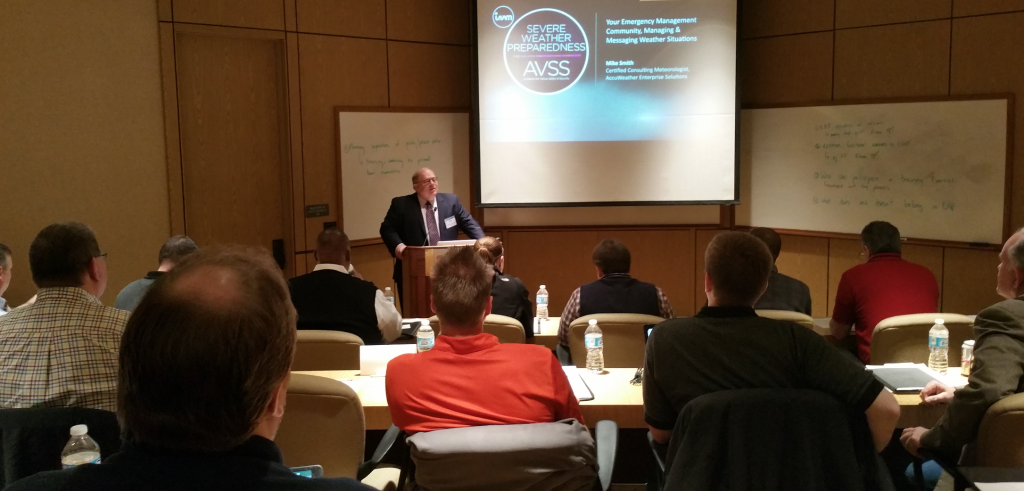Please allow me to begin this blog post by thanking IAVM for allowing me to present on venue safety and extreme weather at the Severe Weather Preparedness program in Dallas. I had a wonderful time meeting great people while evangelizing on a subject close to my heart.
For those unable to attend the Dallas meeting, I am the senior vice president and chief innovation executive for AccuWeather Enterprise Solutions Inc., based in Wichita, Kansas. We specialize in tailoring site-specific warnings of extreme weather for venues and dozens of other industries. In 2014, we provided warnings for more than 1,000 venue events. In addition, I provide consultations to companies that want to improve their severe weather procedures or even understand how extreme weather affects their guests.
The amount of progress weather science has made in providing accurate, actionable storm warnings during the last 10 years is nothing short of remarkable. Combine that progress with social science research into the most effective ways of communicating warning messages to an assemblage, and venue managers now have effective tools that will prevent injuries, lessen liability, and, whenever possible, assure the show goes on.
If there is one thought you take away from this post, it is that every venue needs a weather plan that accounts for each type of activity hosted by the venue. This could range from a circus to a concert to a major league game. Each will have its unique challenges and “lead time” (the interval from notification of a storm to the storm’s arrival) for implementing safety measures.
Each plan has five components:
• Determining lead time and unique aspects of each type of event
• Weather monitoring
• Communicating weather information to your guests
• Sheltering your guests
• What to do if “the worst” happens.
Bitter experience in recent years demonstrates the plan should require:
• If storm X threatens, then we do A.
• If storm Y threatens, then we do B.
• If storm Z threatens, then we do C.
Where X, for example, indicates lightning or another specific type of storm.
By specifying, in advance, procedures in your plan, it negates the temptation to respond with what you want to happen as opposed to what is most likely to happen.
The second item I would like you to take away is to use minutes rather than miles to trigger safety actions. If you use, for example, 10 miles as an alerting radius, a storm moving at 70 mph may not give you enough time. A storm moving at 10 mph may dissipate before arriving, causing a false alarm. So, ask your provider to provide, say, 15 minutes of warning rather than a fixed radius.
And, while it is counterintuitive, make your storm-related decisions based on input from one or, at most, two trusted sources. Peer-reviewed research demonstrates this is far more effective than using a plethora of sources. A large number of sources (e.g., six or more) allows decision makers (often subconsciously) to “shop” for the forecast they want rather than what is meteorologically the most likely.

